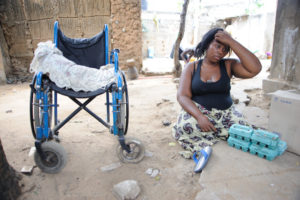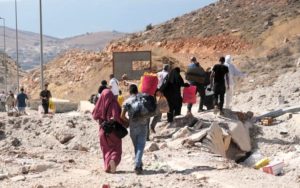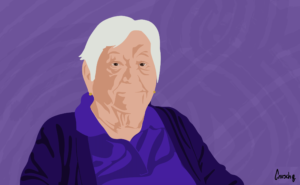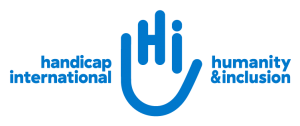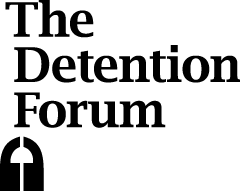Angela Raven-Roberts is a former UNICEF Regional Chief of Emergencies and Director of Save the Children US in Ethiopia. She has over 40 years of research and policy engagement on disaster relief and livelihood issues in Ethiopia. Angela grew up in Ethiopia and maintains strong personal and academic connections in the country.
“First there was blood, then came water” was the comment of a Tigrayan farmer I interviewed in 2018 when undertaking a study on the history of UNICEF in Ethiopia. We were discussing his assessment of the past and hopes for the future. He described the impact of the war (1970s, 1980s) on Tigray by the Derg military regime and how, in areas where so much blood had been spilt, there were new pipelines, new schools and new prospects for his children going to school “in shoes” and not having to study by “candlelight”. But, the lights seem to have gone out again in Tigray and development gains have been destroyed by armed conflict; once again, there are lamentations of despair over the bloodshed, suffering and the rising death toll. A long history of crises and pain engendered by the country’s political dynamics are echoed in the latest outbreak of armed violence in Tigray and its ramifications for civilians and their future.
Tensions between the Federal Government of Ethiopia and regional authorities of the Tigray People’s Liberation Front (TPLF) boiled over into open conflict on 4 November 2020. Since then, the concerns of local and external observers have been mounting as the extent of deaths and devastation from the conflict gradually emerges given the evidence of refugees who have fled to Sudan and other sources.
Sir Mark Lowcock, the UN’s most senior humanitarian official, warned on 6th February that the conflict “could trigger broader destabilization” as aid workers struggled to secure access and undertake life-saving action. Whilst Ethiopia is a founding member of the League of Nations and the United Nations, and is a party to the Geneva Conventions, it also has a long record of being resistant to what is perceived as external pressure regarding its compliance with various treaties.
Humanitarian Impact
According to the UN, some 2.3 million people are in urgent need of humanitarian action. Included are 100,000 Eritrean refugees who were formerly housed in four camps; two of these are reported to have been destroyed and the whereabouts of the refugees unknown. Reports of their forced return to Eritrea and attacks by Eritrean soldiers ‘supporting’ the Ethiopian federal forces adds to the complexity of the situation.
1.3 million children are out of school and educational buildings, clinics, hospitals, warehouses, roads, bridges and other vital infrastructure have been looted and damaged. The conflict has resulted in the collapse of administrative and financial systems leaving many personnel such as health workers, teachers and civil servants unpaid. Food prices have gone up and crops have been left unattended. In addition, a further 60,000 refugees from Tigray have sought shelter in Sudan.
The specific situation in Tigray, the northernmost region of Ethiopia, is not unique in terms of humanitarian need. Last year, the Federal Government and the UN, appealed for a massive 1.4 billion dollars in aid for 22 million people. The Humanitarian Response Plan, revised in August 2020, provides a salutary picture of the very concerning conditions impacting Ethiopians across all regions.
Throughout 2018 to 2020, the IDP population increased to 2 million people displaced from various conflicts and floods occurring across Ethiopia. Refugees, within the country, stood at 800,000 in three areas hosting camps of people from Eritrea, South Sudan, Somalia, the Democratic Republic of the Congo and other places. Ethiopia, a rugged land-locked country with a population of some 112 million people, has also had to cope with large numbers of migrants being forced back from the Gulf States. Unprecedented locust swarms have been devastating large parts of Ethiopia, affecting agricultural and pastoralist regions alike by destroying much needed crops and pasture. An additional blow is the Covid pandemic creating a heavy toll on investments, industry and community livelihoods.
A further factor causing risk and vulnerability in Ethiopia is the volatility and upheaval that affects the civil service and those responsible for the provision of essential services. During the 2010-2106 period, the Ethiopian People’s Revolutionary Democratic Front (EPRDF) party consolidated its hold over all levels of the country’s administrative structure. Many civil service ‘reforms’ meant that employees and government organizations were in a constant state of change involving, lengthy meetings, re-education seminars and re-assignments that disrupted the implementation of policies and protocols. Discussions with diverse Ethiopian interlocutors advise that the effects of the constant restructuring have become more acute since the appointment in 2018 of the new Prime Minister, Abiy Ahmed; his attempts to implement his own reforms involved replacing EPRDF loyalists. As new ‘loyalties’ are being created at national and regional levels, former EPRDF cadres are feeling vulnerable and resentful. This is felt most acutely in Tigray where implementing a full-scale relief operation in the absence of experienced personnel, degraded infrastructure and ongoing security risks, will be daunting. At the same time, even if humanitarian access issues are resolved, there is no guarantee that aid operations will not become targets of looting and destruction, thereby exposing vulnerable communities to further pain.
History, Violence and Suffering
Prevailing narratives and analysis of the latest conflict and its ramifications relate both to immediate causes and historical origins. The series of events triggered by Abiy’s cancellation of May 2020 elections in Tigray and the disbanding of the EPRDF fueled his armed intervention into Tigray in November. Longer term origins stem from rivalries and the evolution of the Ethiopian empire; this includes key legacies of language, literacy, religion, and cultural traditions and the role of Tigray and its leaders during various epochs of Ethiopian state formation.
Ethiopia’s rich history has been widely documented including its experience of wars, famines, diseases and other disasters. Since the great famine of 1974, the history of disasters in Ethiopia shows that it is politics that routinely make disasters associated with natural hazard events more vicious and causes widespread death and mass starvation. The 1974 famine was made worse by the Imperial regime’s refusal to acknowledge that there was a drought, a decision which became a major factor in precipitating the downfall of the Emperor and his government. The 1984-85 famine emerged during the tenth anniversary celebrations of the military regime. Once again, the Derg, the ruling military junta, refused to admit the extent of the drought. In addition, its ill-conceived villagization and re-settlement policies, together with forced conscriptions on a massive scale went on to make things worse, intensifying the ‘Liberation Wars’ of Tigray and Eritrea that contributed to the Derg’s defeat in 1991. The suffering, displacement, death and exile that these crises produced also gave rise to perceptions, elsewhere, of a proud nation being reduced to a land of starvation, beholden to countless international agencies and dependent on foreign aid.
The EPRDF’s approach to eradicating the circumstances that lead to crises, and promoting prosperity and dignity, focused on the implementation of an ethnic federal system to address historical and regional injustices and inequalities while accelerating economic and industrial development. The last 20 years of the transformation of Ethiopia have been remarkable and also very visible. Along with rising levels of school enrollments, an increase in GDP and international trade, there has also been significant development of commercial farms, roads, railways, schools, universities, industrial parks as well as major prestigious facilities such as hotels and modern airports for each of its new regional capitals, culminating in the launch of the Grand Ethiopian Renaissance Dam.
Investment in disaster risk management and preparedness has enabled the government to successfully withstand a series of food security crises in 2010, 2014 and 2015. However, other policies including poor investment decisions, growing corruption and perceived abuses by the EPRDF’s state monopolies created new grievances that led to the eventual demise of the EPRDF and transition to the government of Prime Minister Abiy Ahmed.
Inhumanity and Indifference
20 years of peace and relative stability have now been punctured by renewed fighting in Tigray. Debates amongst Ethiopian politicians, academics, professionals and the diaspora are polarized around ethnic positions and narratives of past real and constructed injustices. Social media has become saturated with hate speech and amplification of these positions as well as vicious ‘othering’ of opponents.
There is a danger in Ethiopia that a shared sense of responsibility for respecting the humanity of fellow human beings is being silenced. Inhumanity and its public expression are in danger of being mainstreamed. Insulting opponents and demonizing opposition parties, posting photographs of dead bodies, the butchering of innocent children, the rape of women, burning down homes, churches and mosques, looting cultural treasures and destroying business premises and means of livelihood seem to have become normalized and considered legitimate expressions of protest. These actions, which under traditional Ethiopian value systems would be considered taboo as per the notions of sewinet and siltanat – Amharic words meaning “being human” and “civil behavior” – are at risk of becoming routine. At the same time, growing evidence of the increased number of ‘at risk’ populations is met with indifference and dismissed as propaganda by pro-government authorities.
Calls to the government to respect its obligations under humanitarian law, appeals to protect the rights and humanity of civilians and to investigate abuses are treated with opprobrium, and in some quarters deemed as provocative and anti-Ethiopian. This trend is common to many other contemporary strongman regimes around the world – in Myanmar, Sri Lanka, Syria, China, Turkey etc. Being pro-citizen is characteristically and always construed as being anti-government. Journalists and researchers attempting to gather evidence on violations and calling for compassion are met with accusations of bi-partisanship and threats of imprisonment. Human Rights organizations are deemed as ‘foreign’ agents subverting national sovereignty and imposing unacceptable foreign/western traditions.
Solidarity: Standing for a Shared Humanity
This new crisis has erupted at a time when Ethiopia was at another pivotal moment in its history, one where there was hope that new spaces were opening up for the country to re-imagine and re-envision new governance models. A key challenge for outsiders and friends of Ethiopia is how to show solidarity with its peoples and support its citizens in their quest for social justice and equality, as well as the fulfilment of their rights and protection from harm.
Ethiopia has a range of robust academic, professional, media, legal, and local grass roots organizations, all concerned with advancing equitable development and respect for human rights. The Ethiopian Human Rights Commission has already set a precedent of attempting to document and provide unbiased information on violations and incidences of abuse. Local NGOs have a laudable track record of working in emergencies and providing relief to the needy. The Ethiopian Red Cross Society, founded in 1935, has branches in all regions of the country and an extensive volunteer system. Recently, the Core Humanitarian Standards have been translated into Amharic and Oromiffaa, something that hopefully can be done for the many other key languages of Ethiopia. These concepts need to spread beyond the realms of specific organizations and become part of everyday language and practices. The crisis within and beyond Tigray show how the values of empathy and compassion of the major faiths of Ethiopia can resonate with, and be enriched by, universal principles that are a boon to all who want to unite in challenging inhumanity.
Photo Credit: UNFPA/Sufian Abdul-Mouty
The views expressed in this opinion piece do not necessarily reflect those of United Against Inhumanity.
